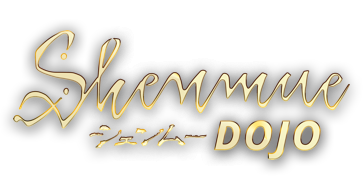I agree with GhostTrick on this point the story was lacking in Shenmue 3, there's no bones about it, no sugar coating that. I am confused why you're fighting so hard against tomboz here, what is saying is true, if you break down the games into a very rough plot structure they all basically follow the same flow, give or take some things. The thing that makes Shenmue 1 and 2 much better than 3 in the story department are the things in between those plot points, better, more fleshed out characters, more dialog ect. I think it s very positive that structurally Shenmue 3 is similar, it gives a lot to the fact that they still know how to structure it at least in the thousand foot view. Many say the writers are bad, I can't say for sure, but I don't necessarily think so, I think the fact comes down to more or less as I have said before there were only 3 writers on this game, Shenmue games even 3 in terms of plot are much longer than a feature film and tasking 3 people to manage that much it's no surprise things ended up how they did. The ultimate thing with 3 is, they have successfully built the foundation of a Shenmue game using a new engine and different technology, they have only limited refinements to perform on the gameplay, Story and characters can really get focused on. Shenmue 4 will be much better and I think that's what we should look towards, 3 has happened it's over let's do our best to get the word out to Yu and hs team exactly what we want to see improved.
That's my main complain about how Yu handled the development. It's like he decided to design the game as he worked with 80 people or was expecting a third money/time extension which would have been a miracle.
I'm convinced that if Yu knew in advance about the final result, it would have changed his blueprint. A less scalable design and rather focused on fixes.
The way the music has been roughly implemented is very illustrative about what happened behind closed doors. Shenmue 3 was a race to implement concepts that Yu viewed as mandatory to respect the "Shenmue formula". The more, the better.
The quality of implementation was secondary because he thought whether Shenmue 3 could not be a good game without them or it would utterly disappoint fans.
Sadly, these elements are so rough that there are always something disturbing in the way they click together. It's possible that the obsession of replicate the Shenmue formula was so strong that it prevailed over the goal of making a good and balanced game.
Not that Shenmue 3 is a bad game, but it commits what I fear the most in gaming and entertainment in general: the nature of not being interesting. A game can be good or not, if it's not interesting, there's hardly a point I continue unless it has very great gameplay. Shenmue 3 has neither great gameplay nor naturally attracting content:
Barely interesting characters, background-less Niaowu, lackluster development for Chinese culture and martial arts, limited feel of immersion, the list goes on.
If you interested in role-playing a martial artist and becoming stronger and stronger in beautiful and exotic landscapes like a hero in a revenge movie, if you appreciate simple games built around the challenge of mastering an economy, so there is a good chance you will love the game.
But if you're not receptive 100% and lacking of imagination to fill your days, the game becomes too easily annoying because it fails to suggest something interesting may happen.
It's important your game feels "Shenmue" but this feel doesn't have to be so formalist imo. I think this is where Yu was wrong.
One of the strongest points of Shenmue I & II was that the character in front of you feels like a real person, not a scripted puppet like in many modern games. Shenhua and the rapport system was a fantastic opportunity to deepen one of the essences of Shenmue in a very interesting way.
Bailu seemed full of potential mysteries as well. You could also imagine more developed relationship with the local masters, that way it enforces your motivation of being stronger so does the gameplay satisfaction.
Nonetheless, I agree that the game was constrained by a ridiculous amount of factors: logistic, artistic, technique, economic etc. I would even say it's likely that YSnet encountered some critical problems over the production and lead the main programmers to crop their planning.
Again, the music roughness is not normal, we know how much critical it can be for Shenmue to emotionally succeed. In Shenmue 3, music turns out to be annoying for the nerves. Kind of a sacrilege considering the OST has been purposely composed not to be repetitive!
Shenmue 3 could really have been a great game if his plan proceeded as planned. Eventually, it did not as Yu played for (too) high stakes. Maybe we are going to get a far better experience with Shenmue 4 but Yu should definitely have brainstormed Shenmue 3 differently imo, especially since he stated that he never thought about Shenmue 4 while producing 3.


